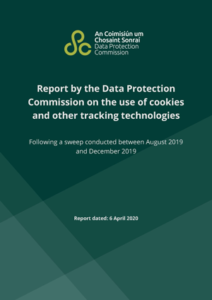 Our previous article on RCT and VAT pitfalls for non-resident contractors provided a general overview of the RCT regime in Ireland. We will now look at a case study analysis of RCT and VAT treatment and explore scenarios in which we have observed mistakes commonly being made among taxpayers.
Our previous article on RCT and VAT pitfalls for non-resident contractors provided a general overview of the RCT regime in Ireland. We will now look at a case study analysis of RCT and VAT treatment and explore scenarios in which we have observed mistakes commonly being made among taxpayers.
1. Supply of Labour for Relevant Operations
We have observed cases whereby contractors in the construction industry, particularly non-resident contractors, engage recruitment firms to supply labour to carry out construction operations on a site in Ireland.
While it is commonly interpreted that RCT only applies to construction operations, in fact the definition of “relevant operations” extends to both the carrying out of and the supply of labour for the performance of, relevant operations in the construction industry.
Case Study – Example 1
Company A (based in Spain) is engaged by Company B (based in Ireland) to carry out demolition works on a number of properties in Ireland. Company A, in turn, engages Company C (a recruitment firm based in the UK) to provide the personnel required to complete the demolition works in Ireland.
RCT Obligations
Company B is a Principal Contractor in respect of these works and is required to operate RCT on the payments made to Company A. This brings Company A within the scope of RCT as it is regarded as a Subcontractor carrying out construction operations in Ireland.
Whilst Company A is a subcontractor in respect of its engagement with Company B, Company A is also a Principal Contractor in respect of its engagement with Company C. Company A will be required to operate RCT on the payments made to Company C because Company C has arranged the supply of labour for the performance of the demolition works on the sites in Ireland.
This brings Company C, the non-resident recruitment firm, within the scope of RCT, as it is regarded as a Subcontractor carrying out construction operations in Ireland.
In this example, Company B must register for RCT as a Principal Contractor, Company A must register for RCT as both a Principal Contractor and a Subcontractor, and Company C must register for RCT as Subcontractor.
VAT Obligations
The provision of the services by Company C to Company A and Company A to Company B falls within a reverse charge provision for the supply of labour and construction services, which is subject to RCT.
Company C, as a Subcontractor, does not have an output VAT liability in respect of the provision of services provided to Company A. As such, Company C will issue its invoices to Company A with no VAT charge.
Company A, as a Principal Contractor, must self-account for VAT on a reverse charge basis (typically at 13.5%) on receipt of the invoices from Company C. Company A should have an entitlement to a simultaneous VAT input credit as it has used the services to make taxable supplies to Company B.
Company A, as a Subcontractor, does not have an output VAT liability in respect of the provision of the services provided to Company B. As such, Company A will issue its invoices to Company B with no VAT charge.
Company B, as a Principal Contractor, must self-account for VAT on a reverse charge basis (typically at 13.5%) on receipt of the invoices from Company A. Company B should have an entitlement to a simultaneous VAT input credit as it has used the services to make taxable supplies to Company B.
In this example, only Company A and Company B are required to register for Irish VAT. Only Principal Contractors are required to account for VAT on the receipt of construction services that fall within the RCT regime.
Company C is not required to register for VAT in respect of its supplies to Company A.
2. Mixed Contracts
A major risk with the definition of a relevant contract arises for contracts that cover both RCT-type and non-RCT-type supplies.
Case Study – Example 2
Company A engages Company B to carry out repair and maintenance works on a number of properties in Ireland.
Is the contract liable to RCT?
The definition of “construction operations” includes contracts for repair work which is interpreted as the replacement of constituent parts i.e., the repair of a broken window by installing a new pane of glass, mending a faulty boiler etc.
However, the definition of “construction operations” specifically excludes maintenance work i.e., cleaning, unblocking of drains etc.
In this example, Company A and Company B have entered into a repair and maintenance contract. This is referred to as a mixed contract. Revenue’s view on mixed contracts is that if any part of a contract includes “relevant operations” then the contract as a whole is considered a relevant contract and all payments under that contract are liable to RCT.
As Company A and Company B have entered into a mixed contract, the contract as a whole, is considered a relevant contract, and all payments made by Company A to Company B are liable to RCT.
This treatment applies even where no repairs are actually carried out by Company B in completing a particular job under the contract.
In this example, Company A must register for RCT as a Principal Contractor and Company B must register for RCT as a Subcontractor.
A common pitfall we see in this area is for a company to raise separate invoices for the maintenance work and the repair work. They then only treat the invoice for the repairs as being subject to RCT. This is incorrect as it is the overall contract, not the elements being invoiced, that governs whether RCT should be applied or not.
However, if there are separate contracts, one covering maintenance and one covering repairs, then only the contract covering the repairs is subject to RCT.
3. VAT Reverse Charge
VAT is normally charged by the person supplying the goods or services. However, under the RCT regime, the person receiving the goods or services (i.e., the Principal Contractor) accounts for VAT as if they had supplied the service and pays it directly to Revenue. This is known as the VAT Reverse Charge.
We commonly see the VAT Reverse Charge being applied incorrectly in cases where a subcontractor supplies goods or services, other than construction services, as part of the overall contract.
Contractors must be aware that while the overall contract may fall within the RCT regime, that does not mean that the VAT Reverse Charge applies to all goods or services invoiced under that contract.
Case Study – Example 3
The facts are the same as in Example 2. See below for reference:
Company A engages Company B to carry out repair and maintenance works on a number of properties in Ireland.
In this case the repair and maintenance contract in place between the parties provides that a separate charge will apply where repairs are carried out.
Company B has now completed repair and maintenance works for Company A and is looking to raise a sales invoice to Company A for the following:
- Repair Works – €4,500 (exclusive of VAT)
- Maintenance Works – €10,000 (exclusive of VAT)
VAT Obligations
Generally, the VAT Reverse Charge only applies to payments that are in respect of construction operations which in this case, are the repair works.
Company B must therefore issue two VAT invoices as follows:
- An invoice for the repair works of €4,500 on which the VAT Reverse Charge applies. Company A will be required to self-account for VAT at 13.5% on the receipt of this invoice from Company B.
- An invoice for the maintenance works (i.e., not considered a construction service) of €10,000 on which VAT at the 13.5% rate is applied. Company A will be required to pay Company B the total invoice value including VAT amounting to €11,350.
RCT Obligations
As set out in Example 2, where a contract is for repair and maintenance, RCT applies to all payments under the contract.
As such, Company A is required to notify the total payment to Revenue. This should include the VAT exclusive payment for the repair works plus the VAT inclusive payment for the maintenance works. Assuming for the purposes of this example that only one payment is to be made by Company A to Company B for the works, Company A would file a Payment Notification with Revenue as follows:
- Repair Works (VAT Exclusive) – €4,500
- Maintenance Works (VAT Inclusive) – €11,350
- Total Payment Reported to Revenue – €15,850
It is important to note that if a repair and maintenance contract provides for a single consideration for all works completed under the contract, then the VAT Reverse Charge must be applied to the full consideration.
Should you require any assistance in this area, please contact us.


 Our previous article on
Our previous article on 




